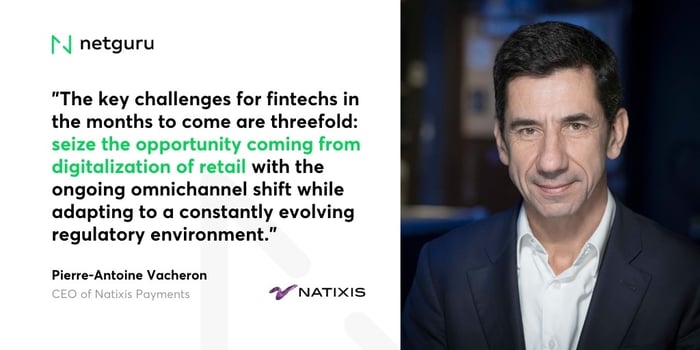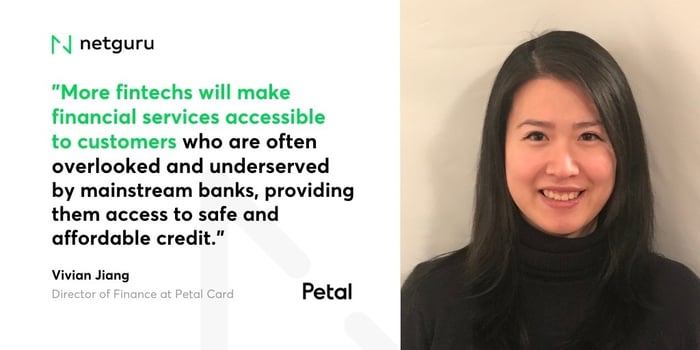Fintech Development Trends to Watch in 2021 According to Industry Leaders


The COVID-19 pandemic has had a major impact on every industry, and fintech is no exception. With many non-essential businesses unable to operate their brick-and-mortar outlets for months, an unprecedented number of consumers started going online for everything from grocery shopping and paying their bills to visiting museums and attending concerts.
In order to survive, businesses of all types had no choice but to meet their customers’ needs online, which is where fintech comes into play. With increasing competition, fintech companies must constantly evolve and innovate to stay competitive.
So what challenges and trends do fintech industry leaders expect to see this year? We decided to ask them. Read the answers below.
More payment flexibility
Peter Theunis, Co-Founder at Radar Payments by BPC

As a result of the COVID-19 pandemic, digital banking and contactless payments are no longer the reserve of the tech savvy, but a necessity for all of us. Many consumers have transformed the way they manage their finances and make their payments. With the e-commerce boom, financial institutions and payment service providers must make their way to the top by offering products and accessibility that matches the users’ expectation of convenience.
In 2021, diversification of payment options will be a crucial next step. Alongside a variety of more traditional card payment options we will see:
- Buy now, pay later,
- Pay on delivery,
- Tokenization,
- Biometric fingerprint cards,
- Vein scanning,
- Phone-to-phone payments.
Moreover, QR codes are becoming an increasingly adopted payment method worldwide. The drive for more trust in payments will also come from the capability to pay instantly, which has not yet been perfectly achieved. Finally, 5G will bring extra speed to serve and protect customers in real time, with a side effect of 3G and 4G becoming more accessible, too.
The fintech and payment industry is booming, and new players will continue to flourish.
Innovation vs. regulations
Pierre-Antoine Vacheron, CEO of Natixis Payments and member of the senior management committee of Natixis

The key challenges for fintechs in the months to come are threefold: seize the opportunity coming from digitalization of retail with the ongoing omnichannel shift while adapting to a constantly evolving regulatory environment. In Europe, PSD2 is creating new constraints linked to strong customer authentication and opportunities linked to account access that both increase the necessity to invest and entail the complexities of adopting new and uncertain business models. All this demands serious discipline in the investment decision process and in the execution of the strategy. Quality of governance and excellence in talent management are more important than ever.
Focus on the customer
Vivian Jiang, Director of Finance at Petal Card

More fintechs will make financial services accessible to customers who are often overlooked and underserved by mainstream banks, providing them access to safe and affordable credit. Consumers are quickly adapting to digital platforms which use underwriting technology that looks beyond credit scores to understand their true financial picture and credit needs. I expect this trend will only grow in 2021.
Also, more fintechs will focus on customers over profits. Fees are a big part of how mainstream banks and credit card companies make money. U.S. credit card companies collected a jaw-dropping $13 billion in annual fees last year, and an additional $11 billion in penalty fees. A growing crowd of fintechs have taken a different approach, eliminating many of those fees in the interest of better serving customers. Their bet is that you can be successful without squeezing customers for every last dollar by delivering simple services at a fair price.
‘Fintech for families’ will be an even bigger deal. Digital banks are going after the family market with a new wave of apps and services designed to make it easier for families, including kids, to manage their finances. Lots of family-oriented fintech startups have raised a massive amount of capital this fall, so expect big things next year.
True sustainability
Robin Nehring, Innovation Manager at Stadtsparkasse Düsseldorf

Sustainability, ethics and values are becoming a required feature of all products and services, especially in the financial sector. Contrary to the opinion that sustainability is the 'cherry on the cake', I believe that sustainability satisfies the customer as it is soon becoming a requirement and not only an added value. So to say sustainability is the 'cake' not just only the 'cherry'. Accordingly, sustainability will be reflected across all products and services, also or especially in the financial sector. However, it will be less the unique selling proposition in the product, but rather integrated as a feature that customers require in order to use it.
At Stadtsparkasse Düsseldorf we have taken this into account and are integrating sustainability components into our products, such as our robo-advisor fyndus. Customers get the opportunity to select a pure 'green' product for their investment. This comes along a 'classic' product, where you can add sustainability topics as a share of your investment.
I believe that the issues of sustainability and digitization are closely linked, which is why this will be one of the fintech trends in 2021.
Integrated payment options
Stephen Lemon, Co-Founder and Vice President of Business Development at Currencycloud

The importance of embedded finance and the resultant outsourcing of integrated payments is set to boom in the coming years and will undoubtedly ramp up in 2021.
Consumers are becoming increasingly used to an integrated financial experience that eases their purchasing experience being embedded within apps and websites.
Fintech will become embedded in the technology stack of the next-generation companies. While the big tech companies like Apple, Google and Uber are currently leading the charge in the development of this space, we need more competition to ensure that this new paradigm will live up to its promise of delivering a better customer experience.
Businesses that don’t have this yet will need it whether they currently realise it or not. Successful businesses concentrate on their core competencies, and the same applies here. Even the big tech firms don’t want to get tied up in regulatory knots and thus will continue to partner with experts who can integrate payment software into their services.
Transparency, Diversity, Efficiency and Payment Orchestration
Ran Cohen, Co-Founder & CEO at BridgerPay
.jpg?width=700&name=Quote%20interview%20(2).jpg)
This very weird time in our lives has brought about many changes to the fintech landscape. While service providers fight to stay afloat, thriving online businesses are dropping them. Emerging markets are the next best thing, but most merchants don’t have the capacity to support local solutions. Buying online has become like brushing your teeth, and merchants are struggling to keep high approval rates. At the same time we can be sure that users of today are smarter, impatient and require businesses to think of them first, and revenues later.
Transparency
One of the fintech trends we will see in 2021 is that brands will become more powerful by demanding transparency from service providers, or opting to drop service providers altogether.
Brands are savvier than ever - they know the ins and outs of every limb in their company, and they now make sure to be aware of all the small print. Nowadays brands have much more knowledge and access to information, putting them in a position of power. To keep up with this ever-changing challenge, vendors and service providers must step up their game and provide 100% transparency. We can already see what will happen if they won’t, as many brands bring what used to be third-party service providers into their company and create in-house teams and products to support their infrastructure, for example CRM, bookkeeping, big data, fraud, and compliance.
Diversity
In the post-COVID era, brands cannot allow themselves to lose a client, let alone a conversion. The rise of digital payments and payment options has taken over the industry and will without a doubt continue this year. For brands moving into emerging markets such as India, Latin America, and Southeast Asia, providing users with the most accessible ways to pay, deliver, and ultimately shop in their own currency and language has become a given. There are multiple local payment options, ranging from buy-now-pay-later to direct wire transfers, cryptocurrencies and credit cards. All of these options need to be provided to the end user in each country that your brand is serving.
Efficiency
After a year of most brands feeling the negative impact from COVID-19, there is no time to waste. Efficiency must be the top priority when it comes to technology, workflows, conversions, and money flow within systems. This means that in 2021, each and every successful transaction will translate into revenue and you can’t take the chance to lose out on it. To ensure that all transactions will be successful, using fallback technology to save transactions that didn’t go through becomes a necessity. Having this technology will allow brands to become more efficient in how they work, align all the countries that they operate in, and will ultimately allow them to have peace of mind that revenue is being produced for the business.
Payment orchestration
Payments are more complex than they used to be. As brands expand and go global, they can start to experience low approval rates and it could be difficult to understand the reasons for failure and how to combat it. The solution to this can be adding more providers for local solutions or finding ways to route certain payments to a specific provider according to a set of rules. Regardless of the company size, this can be time-consuming and take away from the core focus of the business, resulting in the rise of brands using PaaS (payment as a service) companies to streamline this process for them and orchestrate their payments. The real value in payment orchestration platforms is that they are able to increase revenue, provide a better checkout experience for the consumer, and free up valuable time and resources for merchants.
--
We hope these insights will help you have a successful 2021. Here at Netguru we have experience implementing many of the aforementioned solutions. Should you need help developing your own fintech product, don’t hesitate to reach out to us!
Tags






%20(1).jpg?width=415&height=415)
